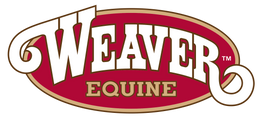Ken McNabb, a renowned horseman and traditionalist, holds a deep appreciation for history and the materials that have stood the test of time in the horse industry. Leather, with its rich heritage and unparalleled feel, is at the heart of his preferred horse tack. McNabb emphasizes that quality leather reins embody a craftsmanship and tactile experience that modern materials struggle to replicate. Here’s a look at what Ken McNabb specifically looks for in quality leather reins.
Weight and Balance
For McNabb, the weight of the reins is crucial. He prefers reins that have a certain heft, typically leaning towards 8 ft. lengths made from either 1/2 in. or 5/8 in. leather. Heavier reins, according to McNabb, facilitate a complete and effective release when dropped, signaling clear and consistent communication to the horse. This weight helps the reins fall naturally and avoids any unwanted slack or confusion for the horse. While some riders might prefer lighter reins, McNabb values the substantial feel and the predictability that comes with a heavier rein.
Feel and Flexibility
The tactile feel of the reins is paramount. McNabb is drawn to reins that are smooth and well oiled, offering immediate comfort and responsiveness in the hands. Quality leather should feel alive, almost as if it has a life of its own, conforming naturally to the hand and providing a reliable connection to the horse. McNabb mentions that even new reins, if high quality, should drape over the hand comfortably and feel as if they are already broken in. This immediate pliability indicates well tanned, well oiled leather that will endure and perform over time.
Durability and Maintenance
Durability is another key factor. McNabb inspects leather reins by squeezing them; quality leather should not crack or show signs of brittleness. Instead, it should show resilience, with any color changes due to stress quickly fading back as the leather relaxes. The longevity of the reins, as McNabb notes, is vital. Quality leather reins, if well maintained, can last decades, potentially becoming heirlooms for future generations. This longevity starts with excellent craftsmanship and requires proper care to preserve the leather's condition.
Features and Functionality
McNabb appreciates reins with specific features that enhance functionality. He favors reins that are thicker at one end, providing a balanced weight that ensures the slack hangs straight down. This thicker end also serves as a useful popper if needed. Additionally, McNabb highlights the importance of reins that have been well finished, meaning they are smoothly edged and free from rough spots that could cause discomfort or wear out more quickly.
Weaver Equine’s ProTack® and Working Tack
For those looking to invest in high quality leather reins, Weaver Equine’s ProTack and Working Tack lines offer exemplary options that meet McNabb's stringent criteria. The ProTack® Extra Heavy Harness Split Reins, for instance, are made from Hermann Oak premium russet harness leather. These reins are dipped in oil, dressed with saddle butter, and hand rubbed, ensuring a substantial, comfortable feel. The water loops with tie laces make replacements easy, adding practicality to their luxurious feel and rich look .
Working Tack Extra Heavy Harness Split Reins

Another excellent choice is Weaver’s Working Tack Extra Heavy Harness Split Reins. These reins are crafted from extra heavy harness leather, offering unmatched durability. The leather is treated with oil and saddle butter, then hand rubbed to a beautiful golden chestnut color. The weighted ends provide the ideal balance McNabb looks for, and the water loop ends with tie laces ensure quick and easy rein changes.
For a combination of durability, comfort, and classic craftsmanship, these products exemplify the qualities McNabb values. Investing in such reins ensures a reliable, long lasting connection with your horse.

